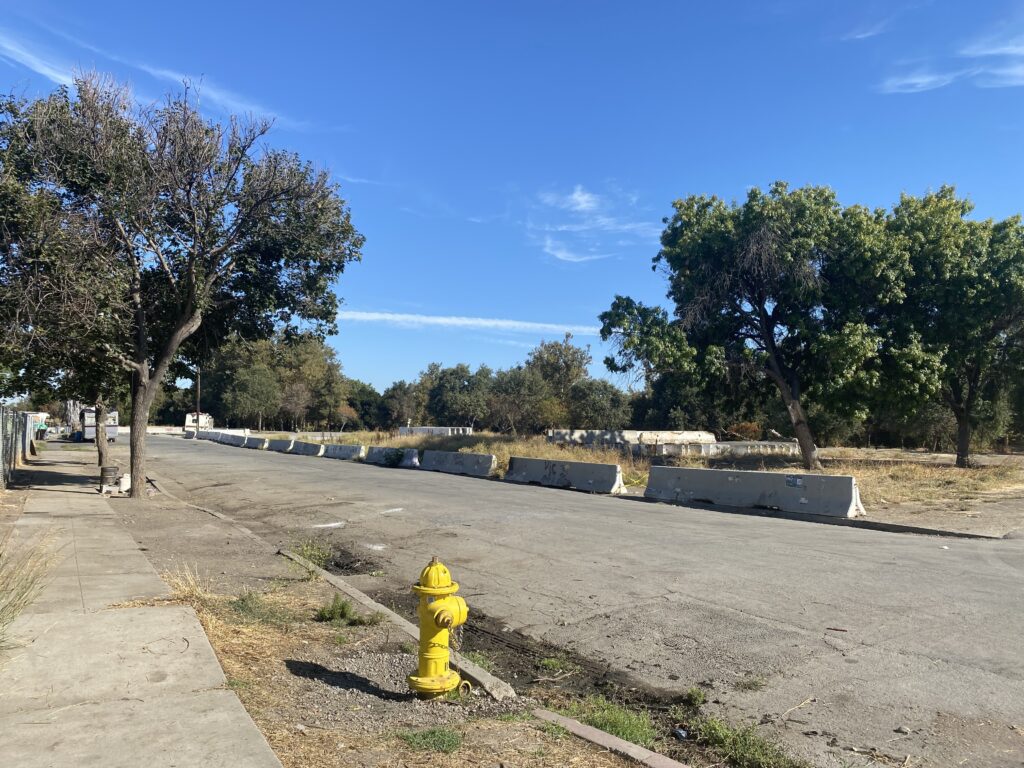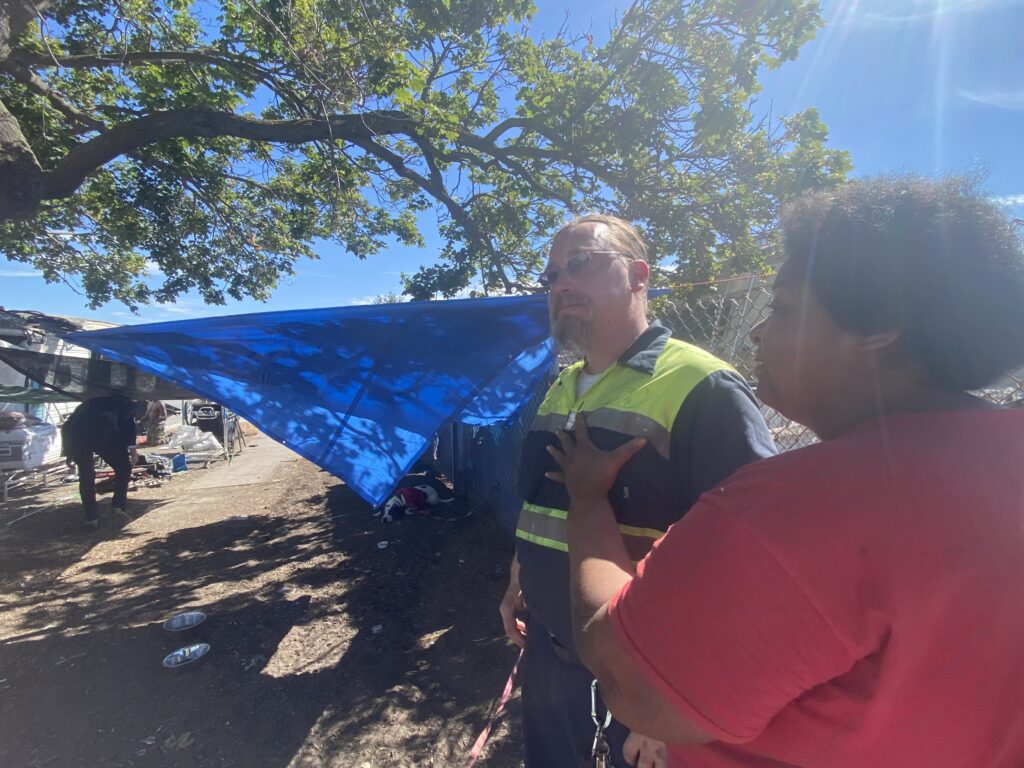Homeless residents from Columbus Park are beginning to move into temporary housing as San Jose continues clearing the city’s largest encampment. While they said they’re thankful for shelter, they worry how they’ll stay housed long term.
San Jose started sweeping Columbus Park Monday and clearing out trash, vehicles and tents. The park has been home to 370 unhoused residents and 120 lived-in vehicles, per city estimates. Irene Street near the park was nearly empty Thursday, save for a couple RVs with city-issued tags reading “Do not tow or abate.” Those tags reflect people who opted to participate in the city’s RV buyback program and move into temporary housing. Most of the remaining RVs and tents on Asbury Street and near the basketball courts are tagged. They can stay in the park until there’s room in the city’s new temporary housing sites that have yet to open.

Joseph Lopez, 42, said he feels relieved to be going into temporary housing soon. He has been living at and around Columbus Park for nearly half his life, and became homeless at 12 and slept in an RV with his mom and brother until he turned 28. He lost his job at Home Depot during the pandemic and ended up back at Columbus Park.
“I want to take a shower. I can get back to work as soon as I get cleaned up,” Lopez told San José Spotlight. “I’m a handyman by trade. I haven’t bothered looking for a job mainly because I don’t have a place to live.”
Lopez said outreach workers haven’t told him where he’ll move to, whether that’s a converted motel or the safe sleeping site set to open on Taylor Street.
“Even (that’s) temporary,” Lopez said. “I’m hoping at least in a year I can be on my feet, (but) finding a place isn’t easy.”
Casa Linda, the first of five motels being converted to homeless housing, opened Monday. It provides 42 beds for people living in the park and is expected to be full by the end of this week, a housing department spokesperson said. The next hotel will begin enrolling residents Friday. The other three motels and safe sleeping site are expected to open within the next month, offering a total of 390 spaces.
James Shaw, 35, said he works a full-time job at a towing company, but is still scraping by. He and his wife have been homeless off and on for the past five years and have been living in their RV. He’s participating in the vehicle buyback program set up by the city, which pays participants $2,000 and lines them up for temporary housing. Like Lopez, Shaw hasn’t been told where he’s moving.
“I drive by these $3,000 apartments, how am I supposed to afford that? My entire paycheck is $3,000,” Shaw told San José Spotlight. “The system is broken. Rent should be based on your income.”

Santa Clara County is becoming increasingly unaffordable — and homelessness is rising.
There are 10,711 homeless people in the county, per preliminary data from a point-in-time count conducted in January — more than 800 people from two years prior. There are 6,503 homeless residents in San Jose, with roughly 3,959 people who are unsheltered.
Cost of living is high across the region. A household needs an annual income of $125,280 to afford a two-bedroom apartment in Santa Clara County, based on the National Low Income Housing Coalition’s 2024 Out of Reach report. About 32.1% of county households have an annual income of less than $100,000 and can’t afford a fair market two-bedroom apartment.
Shaw said he’s been evicted twice before, and is worried about not being able to afford market-rate housing or getting kicked out of temporary housing for not following the rules.
Sarah Fields, spokesperson for the housing department, said the nonprofits running the temporary housing sites set rules and community guidelines.
“There is no limit to the length of stay for clients in the motel-based programs,” Fields told San José Spotlight. “Participants are expected to actively engage in case management, follow the community guidelines and work towards meeting their goals.”
 Shaw typically works from 10 a.m. to 11 p.m., but can work past midnight if he gets a late call to tow a car. Getting kicked out of temporary housing for not following curfew would add to the trauma and instability of being homeless, he said.
Shaw typically works from 10 a.m. to 11 p.m., but can work past midnight if he gets a late call to tow a car. Getting kicked out of temporary housing for not following curfew would add to the trauma and instability of being homeless, he said.
“We’re tired,” he said through tears as his wife Arielle held him. “It’s a constant springboard, being housed then being unhoused. (The motel is) a step up, it’s better than being out here. I just hope it’s not as restrictive, because anytime you enforce you so many rules, it puts too much burden on people.”
Contact Joyce Chu at [email protected] or @joyce_speaks on X.



Leave a Reply
You must be logged in to post a comment.